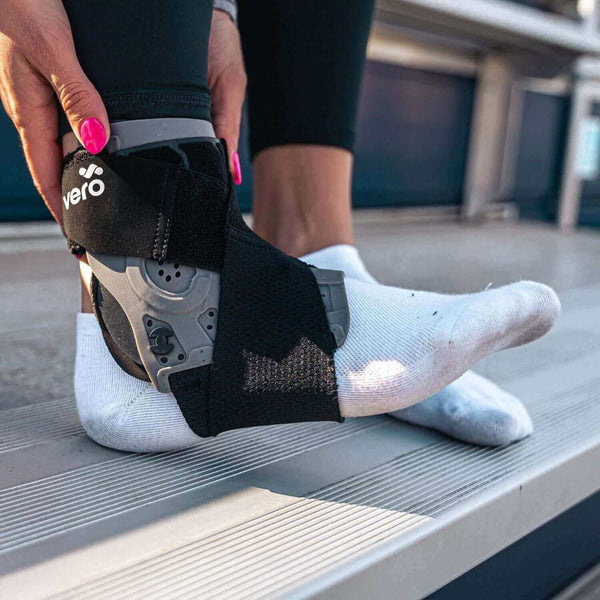Firstly, it’s important to decide whether you need to go to the Emergency Room for an assessment/ x-ray.
Ankle injuries can be divided into three broad types:
A twisted ankle is the most minor injury and is due to a stretching or minor tear to the soft tissues. You may have a little swelling straight away and perhaps a little bruising to the outside of the ankle. Both may get worse overnight. Most importantly you will be able to ‘run it off’ and although it may be sore you can walk and even play on. The ankle will feel stable and this injury will settle in a few days.
A sprained ankle is a more significant injury, you may well have fallen and there will be swelling and bruising straight away. It will be painful to walk on and generally you will not be able to play on. The ankle may feel weak as there will be significant damage to the ankle ligaments and they may even be completely torn in which case it can feel as if your ankle is going to give way. The outer side of the ankle is the most vulnerable side so this is usually where the bruising will be. If there is bruising on the inner side of the ankle this is a more serious injury again.
Ankle sprains can be quite dramatic; sometimes they will look and feel like a broken ankle and it can be difficult to tell the difference. In addition to the bones there are also a number of other structures in the area that can be damaged in an inversion injury so if in doubt seek medical assessment. This is worth doing even if it turns out to be a sprain as the biggest reason for a poor outcome after an ankle sprain is failing to seek medical assistance (or failing to get the right advice when you do).
When the lateral ankle ligaments are sprained the inversion force can damage other bony and non-bony structures such as the cartilage that lines the joint. This damage will not be picked up without a scan. Therefore regularly reassess whether you need to be seen again, especially if you are not improving.
A suspect ankle is the most serious type of injury. This is a group of injuries that includes fractures (broken bones) to the ankle or surrounding bones or damage to other ligaments and tendons. Some of these are very serious, fortunately most of them will be obvious as the ankle will be very swollen, bruised and painful. Unfortunately some of these conditions, including some very serious ones such as Lisfranc injuries, lateral process fractures, peroneal tendon injuries may be less dramatic than the worst type of ankle sprain and so are often missed.
It can be difficult to tell the difference between a bad lateral ankle ligament sprain and one of these other conditions. You need to seek medical assistance for an assessment and possibly an x-ray or even a scan if you are unable to walk three steps; if there is any bony tenderness; any bruising on the sole of your foot or achilles or simply that the ankle has got very swollen/ bruised/ painful.





















